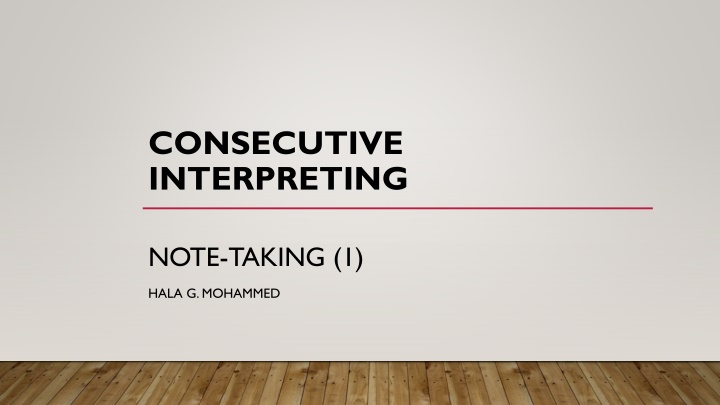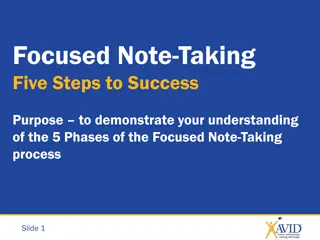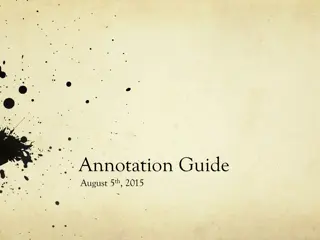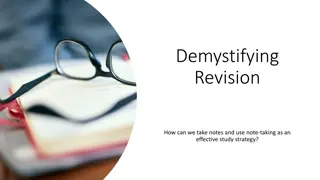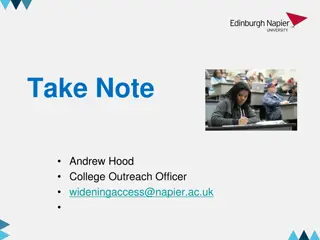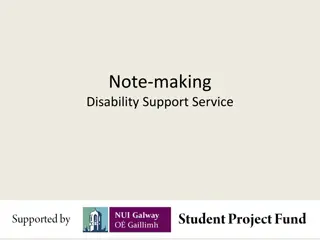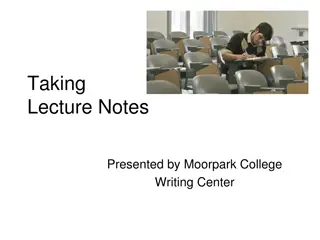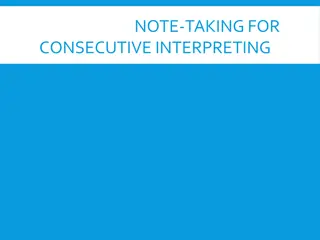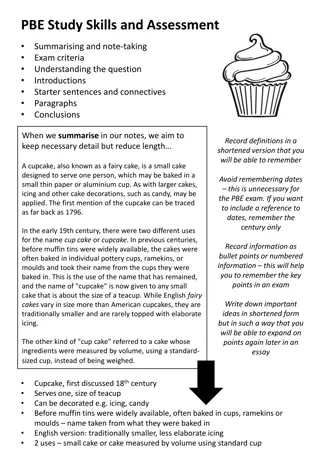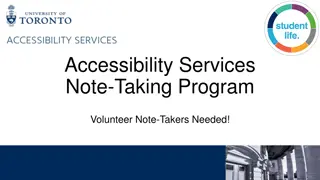Consecutive Interpreting: Note-Taking Techniques
Enhance your consecutive interpreting skills through effective note-taking strategies. Learn how to balance macro and micro thinking, use spiral notebooks efficiently, and identify subject-verb-object structures. Ask key questions while listening and master the art of taking detailed notes during interpreting sessions. Improve your language comprehension and retention for accurate interpretation.
Uploaded on Feb 27, 2025 | 0 Views
Download Presentation

Please find below an Image/Link to download the presentation.
The content on the website is provided AS IS for your information and personal use only. It may not be sold, licensed, or shared on other websites without obtaining consent from the author.If you encounter any issues during the download, it is possible that the publisher has removed the file from their server.
You are allowed to download the files provided on this website for personal or commercial use, subject to the condition that they are used lawfully. All files are the property of their respective owners.
The content on the website is provided AS IS for your information and personal use only. It may not be sold, licensed, or shared on other websites without obtaining consent from the author.
E N D
Presentation Transcript
CONSECUTIVE INTERPRETING NOTE-TAKING (1) HALA G. MOHAMMED
BEFORE TAKING NOTE: Macro-thinking: looking at the bigger picture Micro-thinking: looking at words, expressions or idea. Note-Taking is the skeleton of CI,
Use spiral notebook as shown in the pic. (side, top spiral or both) which one and why????? Write from left to right if your notes are in English or the opposite if they are in Arabic.
Identify the S + V + O ????? Write them down horizontally in your paper S. V. O. =======================
while you are listening, ask yourself, when, what, which, how, how, where?
HOW TO TAKE NOTES??? Listen carefully: In the area for which I have some responsibility, there were also, as the Prime Minister has mentioned, some important developments at Feira.
We took stock of the European Unions relations with Russia and the situation there, including in Chechnya, in the light of the recent Eu- Russia Summit, which I think was regarded as fairly successful.
It is too early to judge President Putins economic programme
However, our basic message is that a sound program will be vital to boost investor confidence. On, Chechnya, there have, it is true, been some recent moderately positive developments in response to international and European Union pressure: for example
Message(s.) is (V.) a sound program will be vital to boost investor confidence (O.) there (S.) have been (V.) developments (O.)
The recent ECHO mission was able to take place and western humanitarian agencies have greater access to the area.
LINKS After identifying the ideas, we need to know the relationship among them (but, however, and, moreover, in addition, while, nevertheless, ..)
USING SYMBOLS The aim of using note x timeless, eternal xx many times, often xx+ many times more xx many times less x t x from time to time, occasionally
=x equal time +x more time, longer time x less time, shorter time 2x twice 3x / three times less than 100x a hundred times 100x+ a hundred times more Ltdx a limited time oldx old-time, old fashioned
x! Its time, the time has come x now, this time gdx a good time xly timely, on time unxly untimely, late x) time limit, deadline x> future <x past ovrx overtime
xng timing sumrx summertime Xtbl timetable, schedule prtx part-time x,x time after time, repeatedly x. time period wrx wartime
ORIGINAL WORD ABBREVIATION w/ with w/o without app. approximately stat. statistics gvt. government
CONCLUSION Steps of note-taking How to take notes Examples of symbols Example of taking notes
